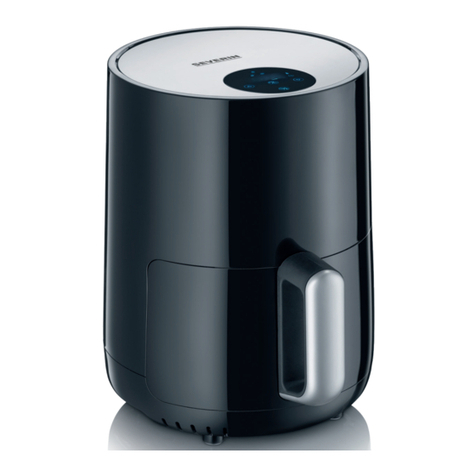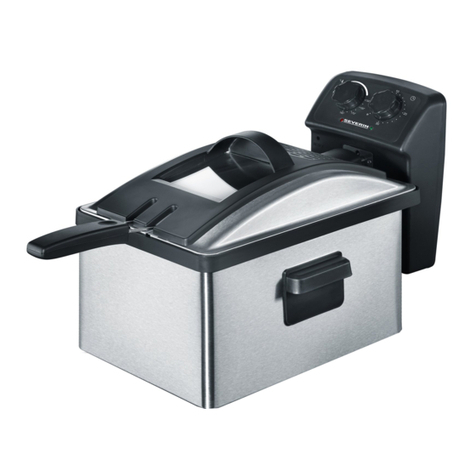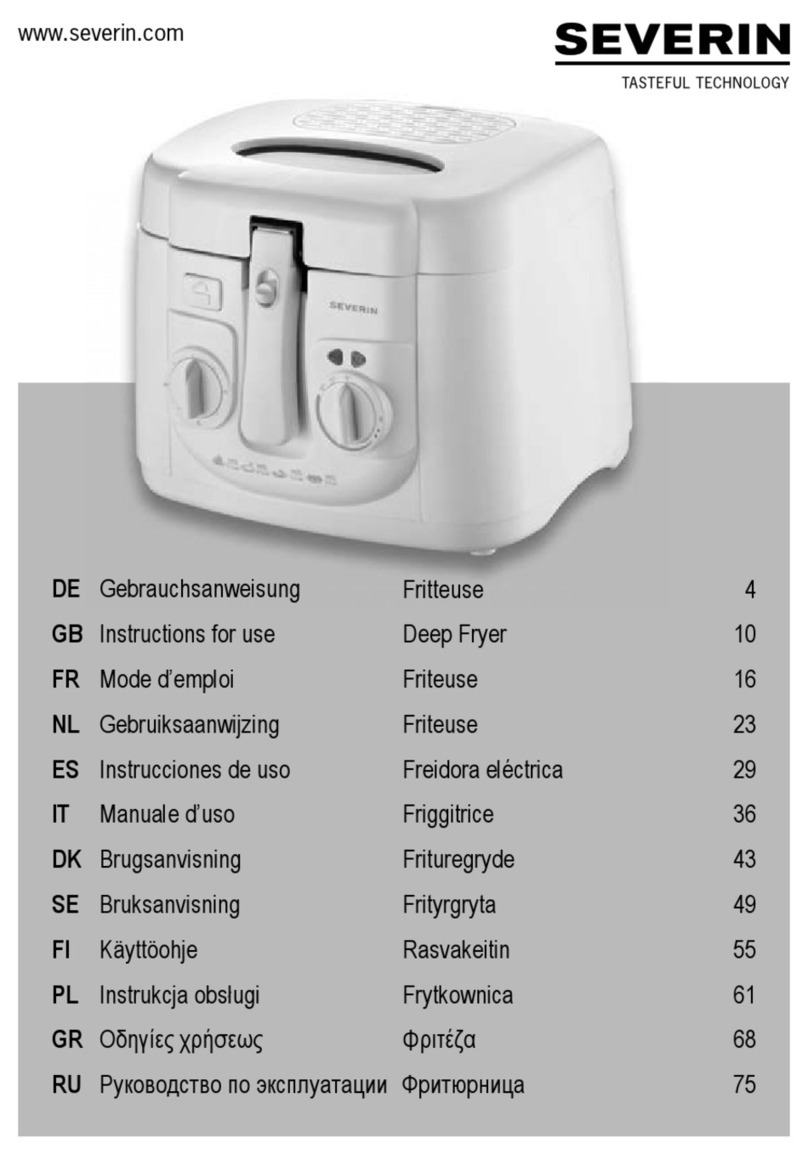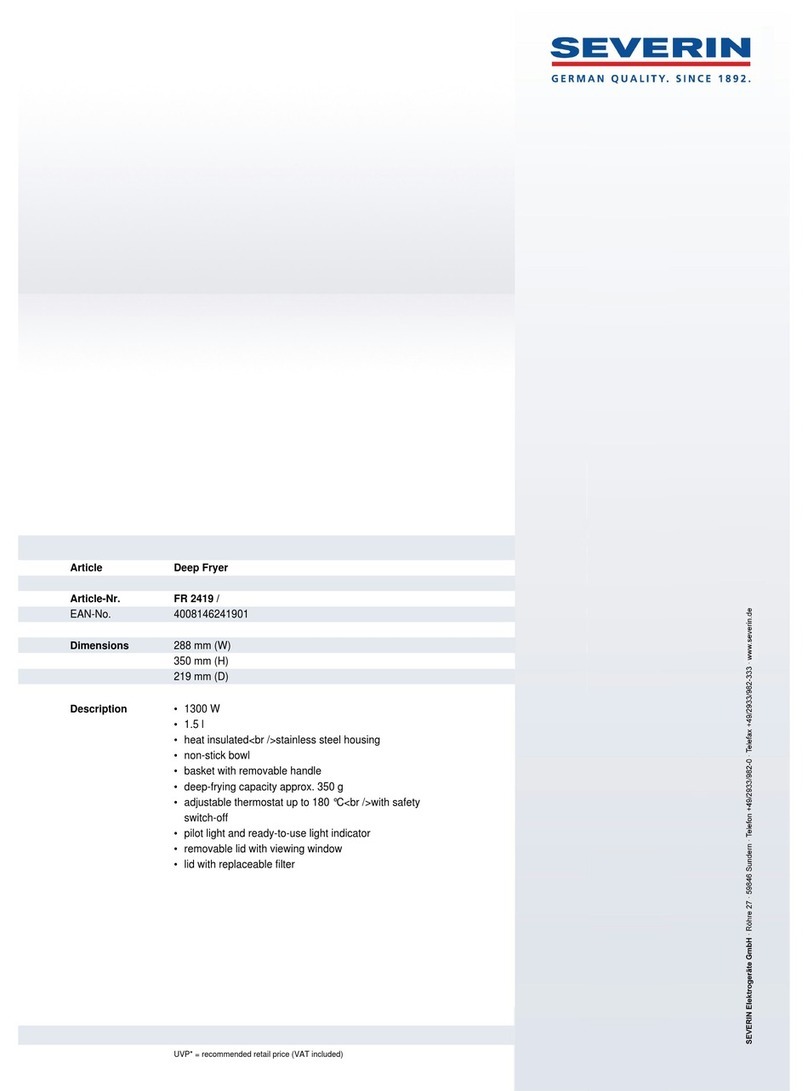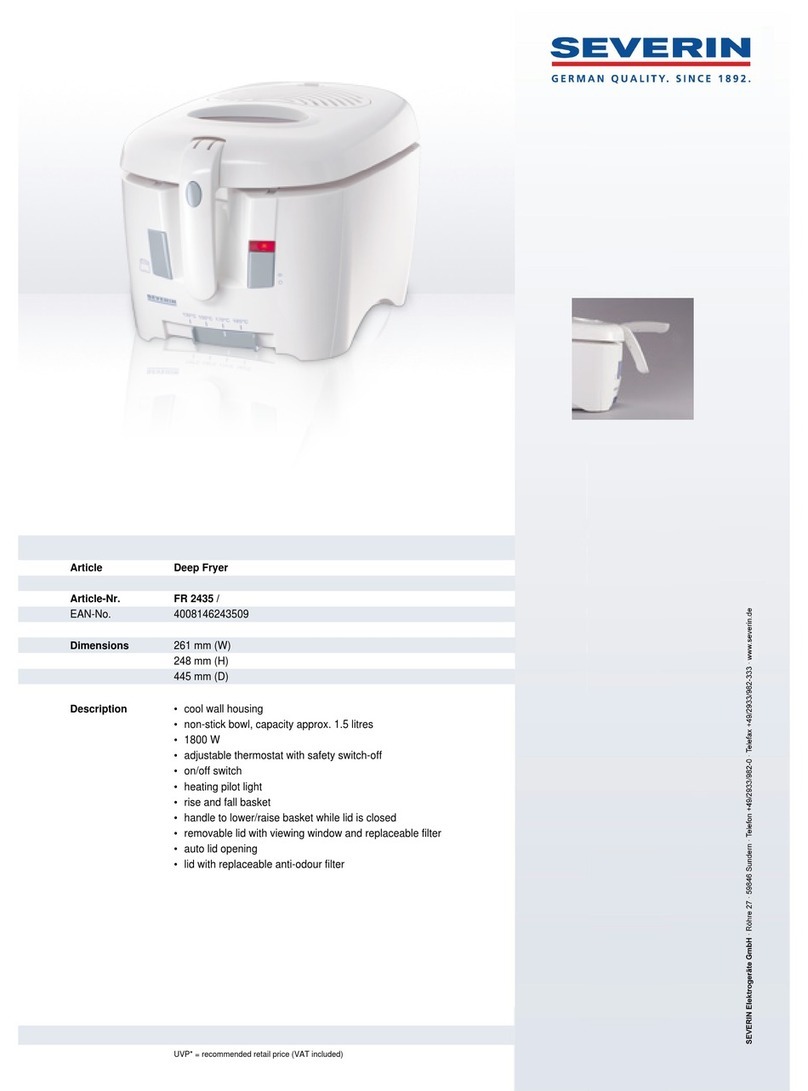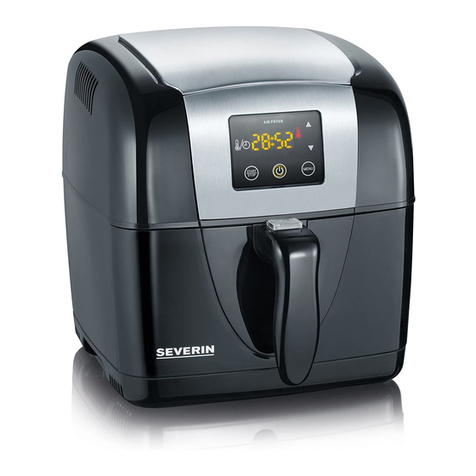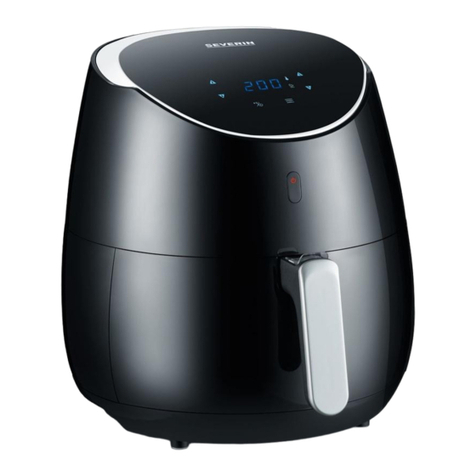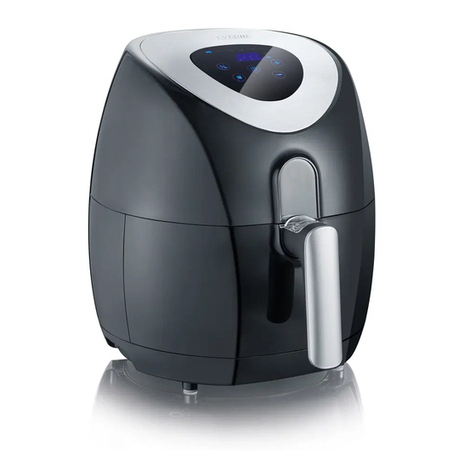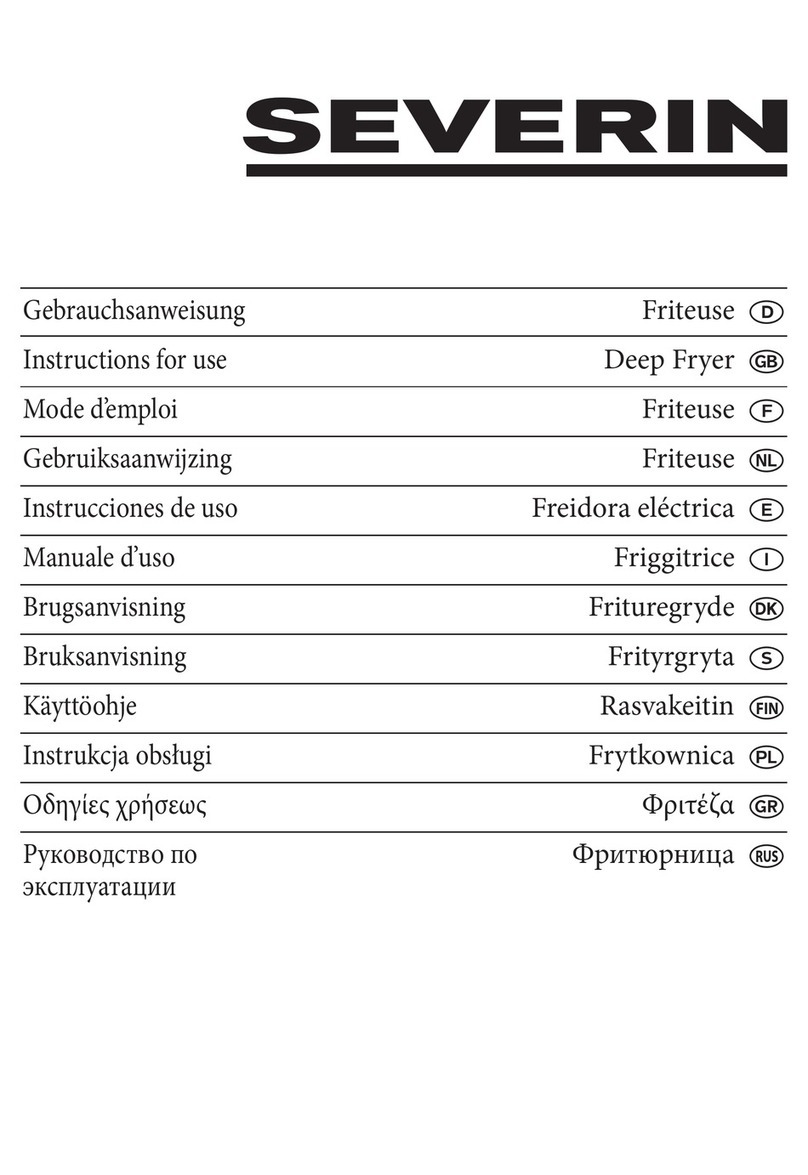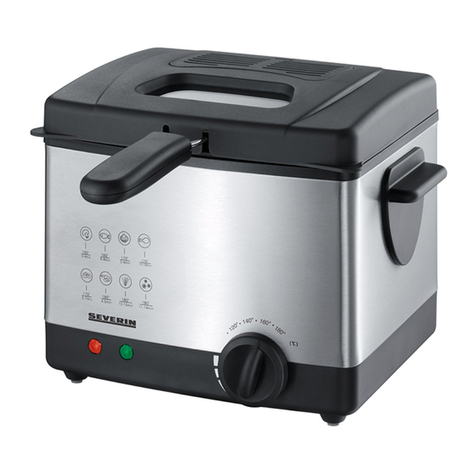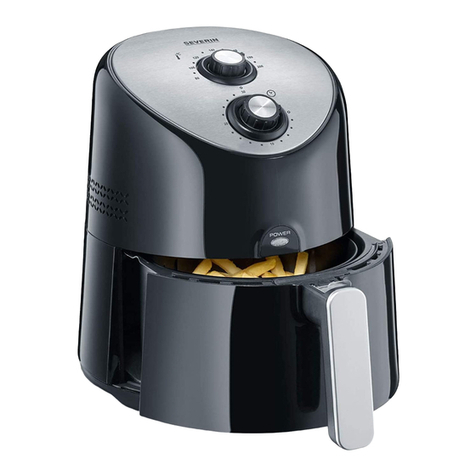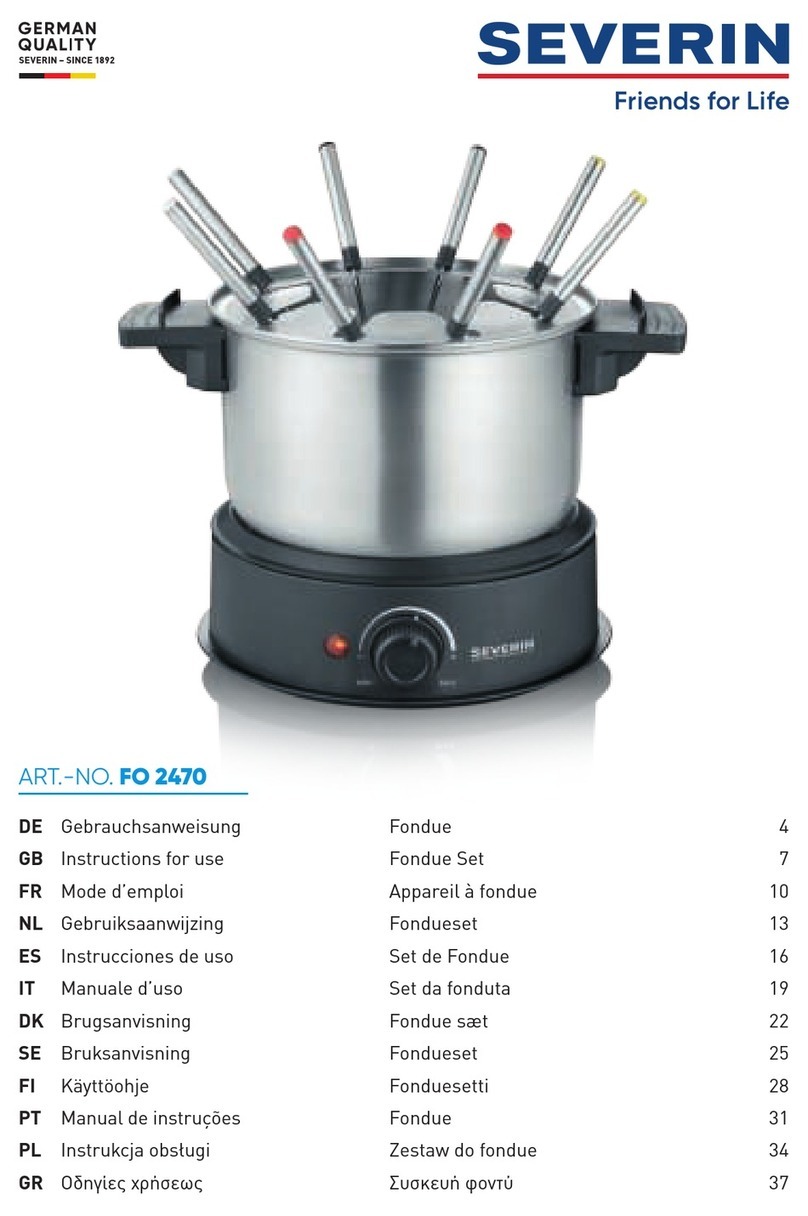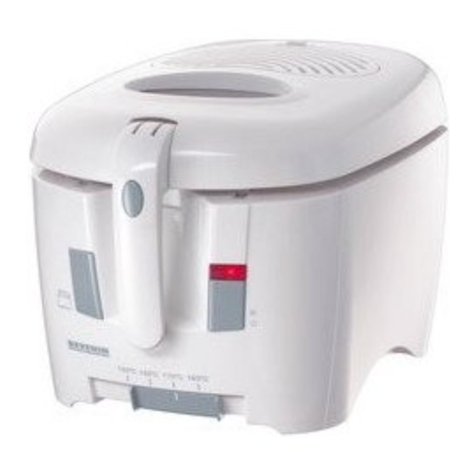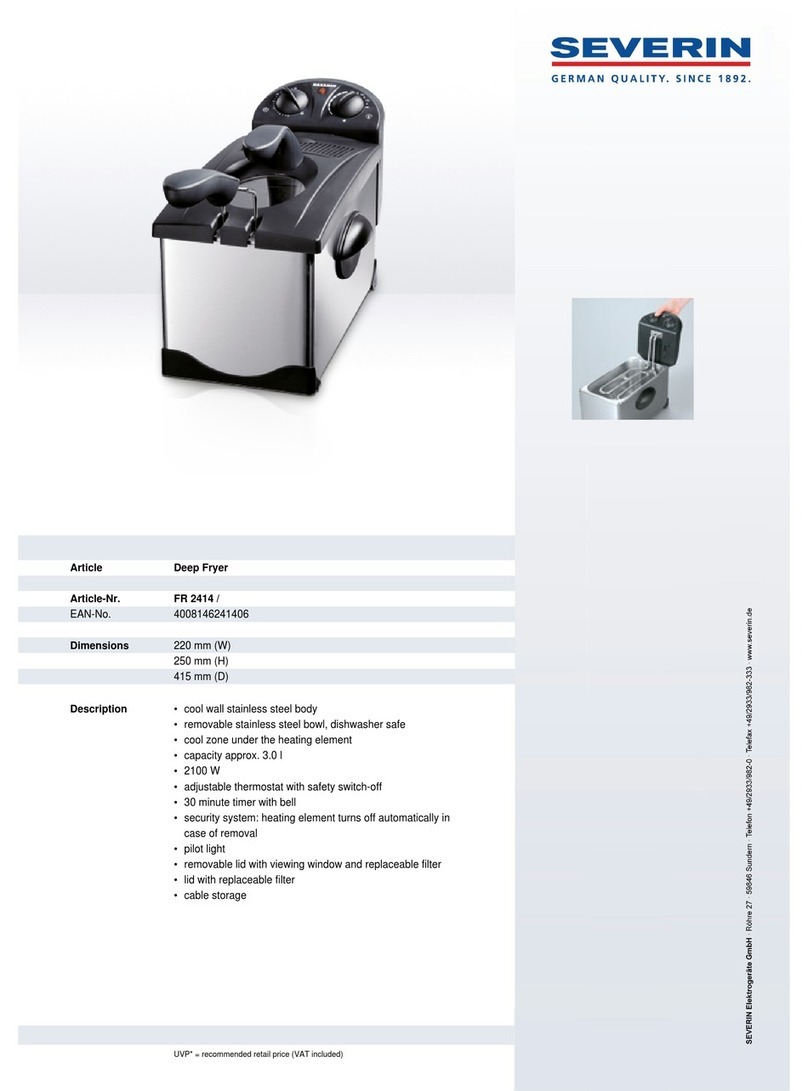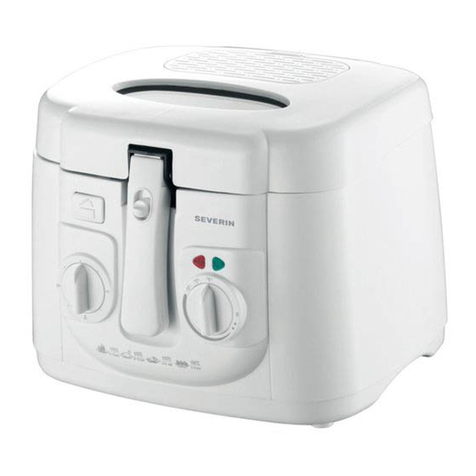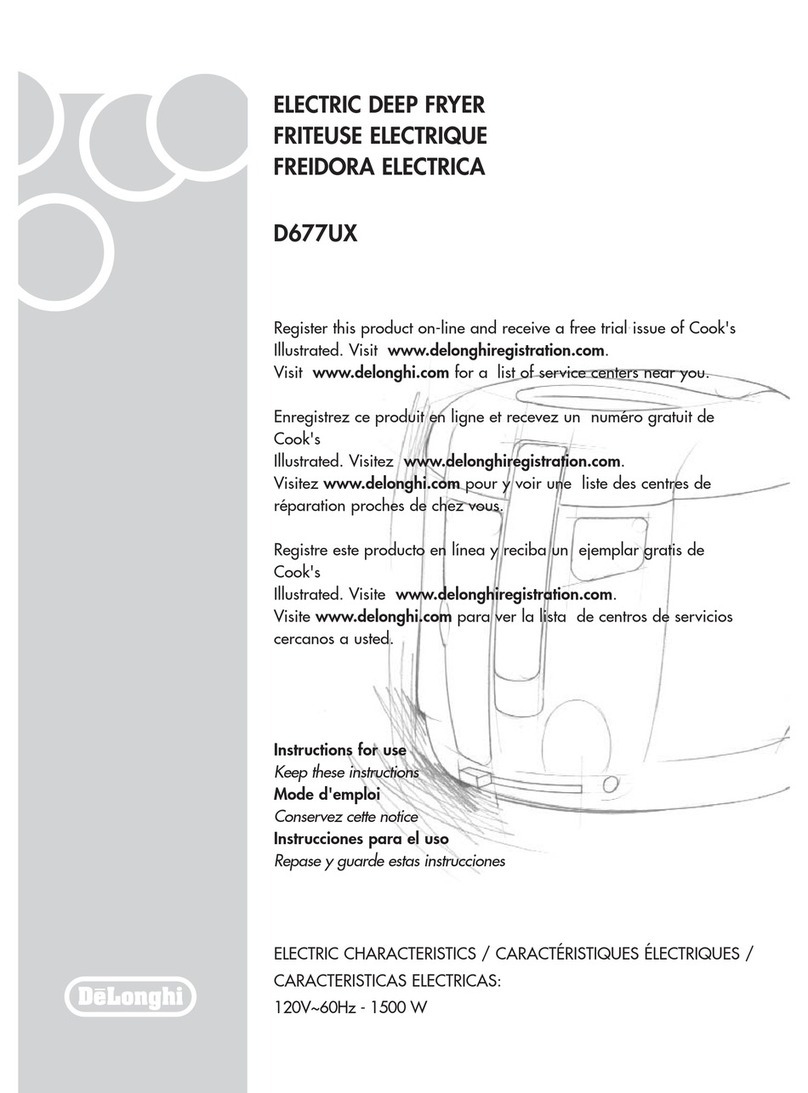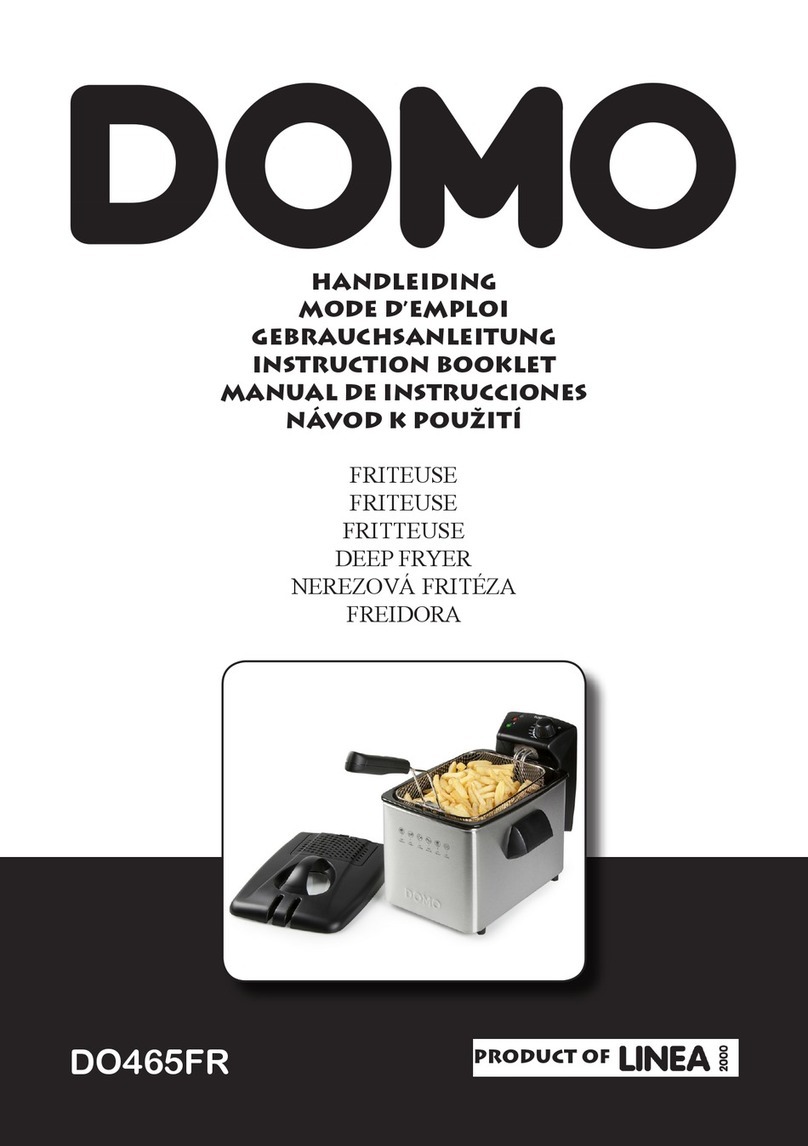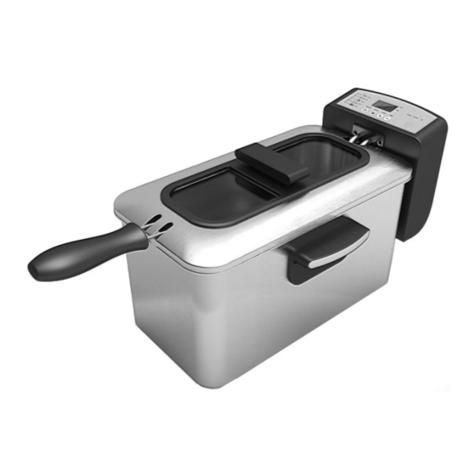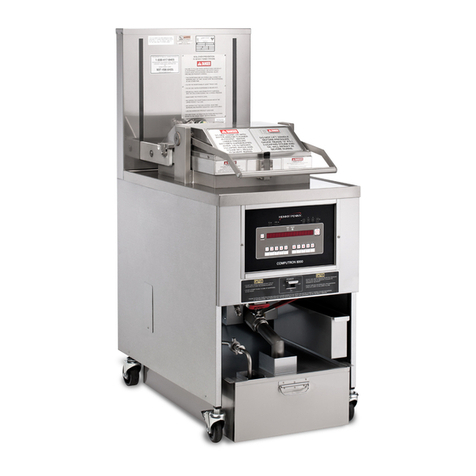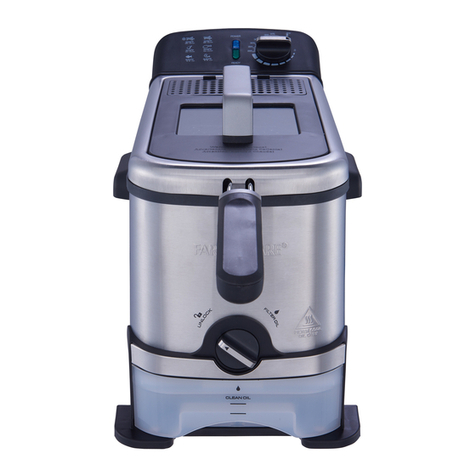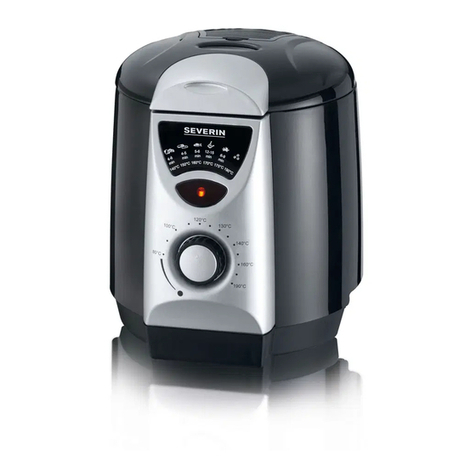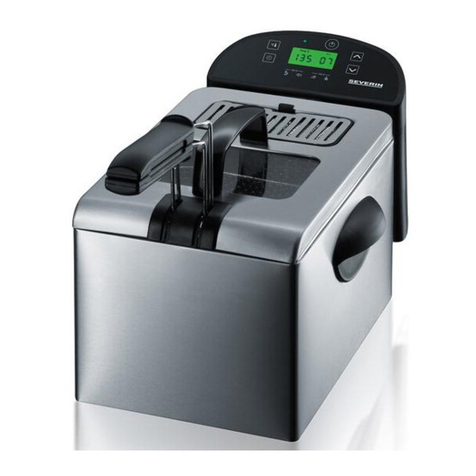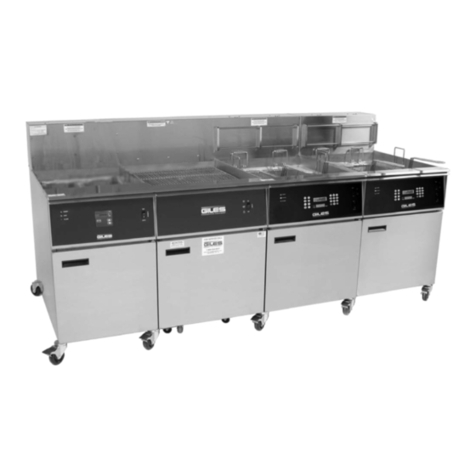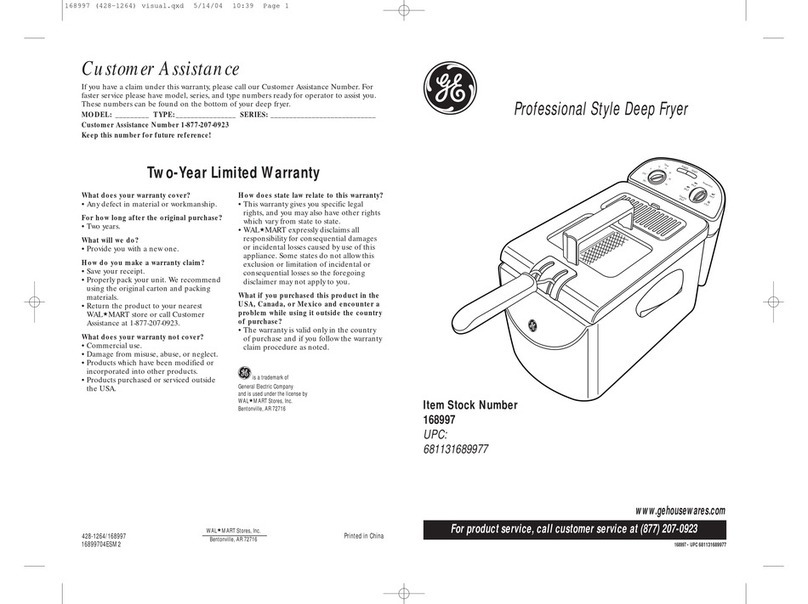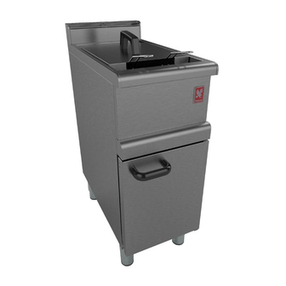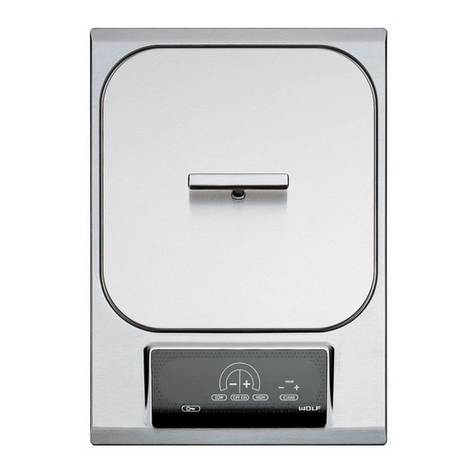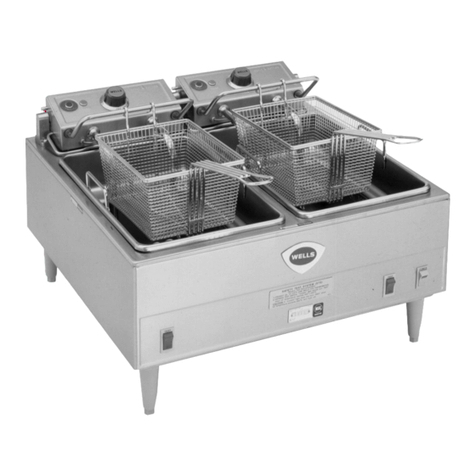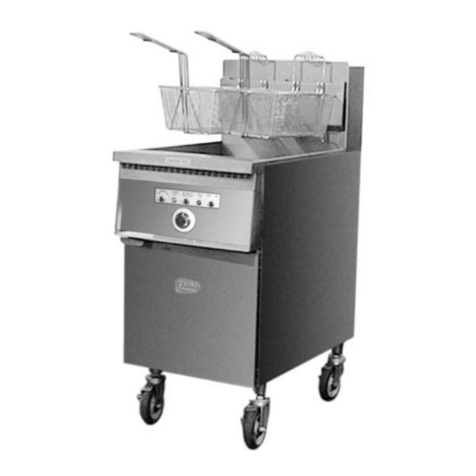14
make sure that the food is quite dry.
Take special care to defrost deep-
frozen food thoroughly before frying.
Moisture reduces the life-span of
frying oil/fat.
3. For good results, the right temperature
setting is a decisive factor when deep-
frying food. If the oil/fat is not sufficiently
hot, the food may take in too much oil/
fat. It is therefore best to insert the food
basket only once the pre-heating period
is complete. If the oil/fat is too hot, on
the other hand, an outer crust will be
built up while the inner part of the food
remains uncooked
4. Deep-frozen or chilled food should
be briefly inserted into the hot oil/
fat once or twice before the actual
cooking process begins.
5. Do not fry too much food at once.
Each item should be able to float freely
without touching any other.
6. When cooking battered food, make sure
that the batter is firmly attached to the
food and any excess flour is removed.
7. Over-used frying oil is easily
recognisable as it is of a darker
colour and more viscous, giving off an
unpleasant smell or tending to foam.
8. Over-used frying oil/fat or oil containing
a residue of particles from earlier use
is more inflammable and tends to ignite
easily. It is therefore best to change
the oil/fat after 3 or 4 cycles of use.
However, its life-span depends mainly
on the kind and quantity of food fried.
9. The life span can be extended if the oil/
fat is filtered after each cycle of use.
10. The oil/fat may be stored inside the
deep fryer if the unit is kept closed and
put in a cool place.
Nutrition-conscious deep-frying
For nutritious, healthy deep-frying we
recommend to use a temperature setting
of no higher than 175°C when deep-frying
amylaceous food, i.e. food with a higher-than-
average starch content. With the reduced
frying temperature, and with an equally
reduced amount of food in the frying basket,
the build-up of substances detrimental to
health is limited to a minimum.
Cleaning and care
∙Before cleaning the appliance, ensure it is
disconnected from the power supply and
has completely cooled down.
∙Caution: to avoid the risk of electric
shock, do not clean the outside of the
fryer or its power cord with any liquids and
do not immerse either of them in water.
∙Do not use abrasives or harsh cleaning
solutions.
∙When the open lid is in a vertical position,
it may be removed for cleaning by pulling
it gently upwards.
∙The lid contains a grease filter which must
be replaced after several frying cycles.
Release the filter cover and take out the
old filter. Clean the lid using a damp cloth
and a little detergent. Wipe thoroughly
dry afterwards. Insert a new fat filter and
replace the filter cover. Replacement
filters can be ordered through the
Severin Service Centre.
∙To remove the oil from the frying
container, wait until it has cooled down
sufficiently but is still liquid and remove
the oil/fat with a soup ladle. Once the
temperature has dropped sufficiently,
you may also pour out the oil/fat into a
heat-resistant container. The oil/fat can
be filtered by pouring it through absorbent




















